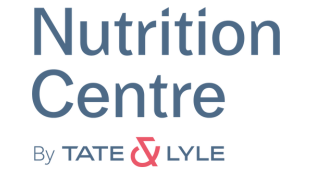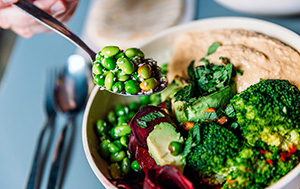In a peer reviewed health and nutrition data modelling study published in the British Journal of Nutrition, scientists from Tate & Lyle, working with specialist data analytics company Crème Global, found that reformulating everyday foods with added fibre could:
- Reduce the risk of cardiovascular and type 2 diabetes risk for 72% of the adult population2
- More than double the number of children in the UK meeting their fibre intake recommendation3
- See 6% of the UK population lose weight through higher fibre consumption4
UK adults consume just 19g of fibre per day on average, significantly under the recommended amount of 30g, with only 9% currently meeting the daily target. Low fibre intake is associated with higher levels of colorectal and breast cancer, cardiovascular disease, and diabetes, and can disrupt the beneficial gut microbiome.
Dr Kavita Karnik, Global Head, Nutrition & Regulatory Affairs at Tate & Lyle and a co-author of the health and nutrition data modelling study explains: “Most people understand that eating fibre helps keep bowel function regular, but fewer understand that getting the right amount of fibre in your diet is highly beneficial for wider health and wellbeing, including cardiovascular, immunity, skin, brain and gut health. However, for most people it is difficult to get enough fibre into their diet without exceeding their recommended calorie intake. This is where fibre fortification could play a highly beneficial role to public health – it would allow consumers to continue eating the products they prefer while potentially, lowering rates of cardiovascular disease, Type 2 diabetes and help maintain a healthy weight across the population.”
Consumers can take several steps to increase the amount of fibre in their diet:
- Swapping jam on toast with almond or other nut butters
- Swapping standard yoghurts with added fibre yoghurts
- Reduce sugar intake and up fibre intake by swapping the occasional milk chocolate treat with a ‘reduced sugar’ version, with added fibre to retain sweetness without compromising on taste
- Swap white sliced breakfast toast with a fibre fortified cereal, marked as ‘source of fibre’ or ‘high in fibre’ on the packet
Tate & Lyle, a leading global provider of food and beverage ingredients and solutions, recently signed up to the UK’s Food and Drink Federation’s Action on Fibre initiative, helping consumers to bridge the gap between fibre intake and the dietary recommendation to help improve gut health and reduce the risk of heart disease, diabetes, and certain types of cancer.
Tate & Lyle offers a broad selection of soluble fibre solutions, such as its PROMITOR® fibre, with distinctive attributes for many food and beverage categories. These include sugar and calorie reduction as well as fibre fortification, helping to support healthier lifestyles and provide nutritional benefits, while maintaining great taste.
Sara Stanner, Science Director at the British Nutrition Foundation commented: “We know that we need diets to change to support better health but encouraging people to make sustained changes to their behaviour is notoriously difficult. This is where reformulation of the everyday products that people eat and drink can be really effective in improving nutritional intakes. We have seen how reformulation has helped to reduce salt consumption and it’s important that the food industry continues to innovate to produce healthier products, in some cases reducing nutrients such as salt or sugar or by adding beneficial components such as fibre.”
Amy Glass, UK Diet and Health Policy Manager, at the Food and Drink Federation commenting on the results of the study: “Reaching the daily recommendation is challenging, even if you eat the recommended 3 portions of starchy food and 5 portions of fruit and vegetables, this still falls short of the daily 30g fibre recommendation. FDF’s Action on Fibre campaign aims to highlight the vital role reformulation and new product development plays for food and beverage companies, giving consumers a wider range of products to assist them in hitting the target more easily. We welcome this research in demonstrating the power these initiatives can have on improving the national diet and raising awareness on the benefits of fibre as part of everyday, healthy lifestyles.”
Cronan McNamara, Founder and CEO of Crème Global: “Using mathematical models with real-world dietary data, Crème Global creates scenarios that are a powerful tool with which to assess the potential impacts of various interventions, such as an increase of fibre intake in the UK diet, as demonstrated in this project. We hope the learnings from these scenarios can help inform companies and governments on new product reformulations or public health policies which make a positive impact for citizens.”
For more information and tips on how to increase your fibre intake visit: tateandlyle.com/guthealth
ENDS
* “Estimating the potential public health impact of fibre enrichment: a UK modelling study | British Journal of Nutrition | Cambridge Core”.
Notes to Editors
[1] The age group of 17 years+ getting 30g fibre per day increased by 52.5% (8.0% to 12.2%).
[2] The CVD risk distribution curve shifted 13% to the left towards lower CVD risk over the next ten years because of fibre fortification, with 72.2% of subjects achieved a reduction in cardiovascular risk (p ≤ 0.05). A mean of a 5.45% chance of developing type 2 diabetes within the next ten years at baseline was reduced to 4.98% at intervention. A reduction in type 2 diabetes risk was observed in 71.7% of subjects (p ≤ 0.05).
[3] The number of children aged 2-5 getting recommended dietary reference values (DRV) 15g/day increased intake by 118.1% (14.9% to 32.5%). The number of children aged 6-10 getting recommend DRV 20g/day increased intake by 111.3% (10.6% to 22.4%). The number of children aged 11-16 getting recommend DRV 25g increased intake by 64.9% (5.7% to 9.4%).
[4] Mean body weight reduced by 0.03 kg (from 70.36 kg to 70.33 kg) with 5.9% of subjects achieving a weight reduction (p ≤ 0.05).
Tate & Lyle’s “Estimating the potential public health impact of fibre enrichment: a UK modelling study” looked at what consumers currently eat and drink using the UK’s National Diet and Nutrition Survey. A statistical modelling scenario was applied to see how food that had been reformulated and fortified with additional fibre changed consumer’s diet and health. This included baked goods (for example breads, breakfast cereals, biscuits), beverages, dairy and dairy alternatives, soups, sauces, and dressings. The only change made to the nutritional composition of the products was the addition of fibre. The study identified more than 900 everyday foods that could be enriched with fibre.
For media enquiries, please contact:
Kate Moffat/Laura Vaughan
FTI Consulting
[email protected] / [email protected]
020 3727 1000
Shelley DeBere
Global External Corporate Comms Manager
[email protected]
07584 540358

